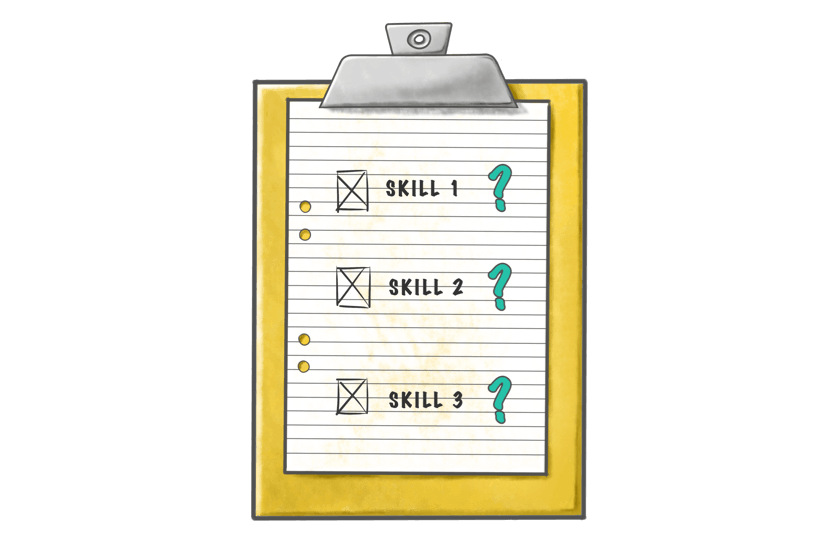
For most of my education I thought pretty poorly of multiple choice quizzes. In high school I’d learned all the usual tricks quiz authors use – and how to outsmart them.
And then, when I arrived at university, I’d sit down at the beginning of each semester and listen to my professors explain how their courses would go. I always relaxed in a bit with the ones who said their assessment would be multiple choice quizzes.
“Psssh,” I thought, “this will be a breeze!”
Until I met my moral philosophy professor. This man was smarter (and funnier) than all the professors who’d come before. And, he actually knew how to write multiple choice. And they turned out to be the hardest quizzes I’d ever taken.
But I never thought about how he did it until I became an instructional designer.
And I've finally cracked his formula:
Quiz the why. Quiz the process. Quiz the consequence.
So what's that mean? Well, read on!
My experience with my philosophy professor illuminated for me what the learning research has born out: when applied skilfully, multiple choice is an effective method of assessing and reinforcing knowledge.
And in my experience I’d go one step further and say that skilful multi-choice questions can even help mould behaviours.
But the key in that finding is ‘applied skilfully’ – easier said than done!
But it can be done. How?
Well, let’s do a case study.
Here’s a typical multiple choice question that was written by one of our hospitality clients:

Is this question skilful?
NO!
Why?
The correct answer is obvious
So what’s the answer?
2
Correct. But why is the correct answer obvious?
It’s common sense…and it stands out because it’s twice as long as the other answers!
Common sense for some, yes. But not for all. And it’s true – all answer choices should be grammatically similar in construction and length. If one stands out it’s usually the correct answer.
So why else is the answer obvious?
Well, answer 1 is illogical.
True – for a question to be effective all incorrect options need to be plausible. But what else is going on here? What makes this question, mmm…hackable?
Anyone? Anyone? Bueller? Bueller?… No?
Okay, so the problem with a question like this is that a savvy learner can deduce the correct answer because options 2, 3 and 4 are not mutually exclusive. That means the content (and/or logic) of the answer choices overlap with each other.
And because they’re not mutually exclusive, there cannot be one empirically correct answer – therefore the correct answer must be 2.
A question like this will not reinforce knowledge, or mould behaviour; it’s an all around a poorly written question. But the knowledge and behaviours it’s trying to quiz – specifically, guarding public health – are important ones.
So how can we reengineer questions like this?
To write multiple choice questions that reinforce and expand knowledge and mould behaviour you can to come at subject from three usual ways:
- Quiz the why - why is it important for your people to know or do something?
- Quiz the process - how specifically is something done? Or what are the details of the idea?
- Quiz the consequence - what are the ramifications of doing or not doing something, or knowing or not knowing something?
For critical knowledge it’s a good idea to hit all three with two or three questions.
So what does that approach look like for this subject?
Quiz the Why and Consequence

So we can infer from where we started that the answer is 2.
But for a learner encountering this question for the first time, the only way to answer correctly is with prior knowledge. There’s nothing in the question itself that allows a learner to reason their way to the answer.
Quiz the Process

What’s the answer?
Ah! Not so much confidence – there’s a shadow of a doubt. And that’s when cognition happens.
You couldn’t know this answer unless you’ve learned the process. But even if you haven’t learnt the material your reasoning goes to work when presented with the question, trying to figure it out, and then primes you to receive knowledge in the answer.
So the answer is…3 - duration of wash. The US Center for Disease Control says 20 - 30 seconds for effective hand washing.
So to recap, a few effective principles for writing effective multi-choice questions are:
- No obvious answers
- All answer choices should be grammatically similar in construction and length
- Make sure all answer choices are mutually exclusive
- Make incorrect answer choices plausible
- Approach your subject laterally by: (Secret Yarno sauce)
- Quizzing the Why - why does this subject matter?
- Quiz the process - what are the specific steps the behaviour or details of the concept?
- Quiz the consequence - what could happen (or not happen) as a result of doing/not-doing or knowing/not-knowing something?
Multi-choice is a powerful learning tool, but, as Yoda said, to be a quizzing Jedi you must unlearn what you’ve learned.
To learn about the big impact little bites of learning can have, download our microlearning white-paper.
















































































































